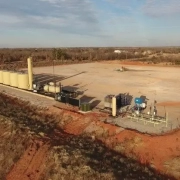How to buy and sell mineral rights: A complete guide
Mineral rights are a valuable asset that can provide substantial income to landowners and investors. Whether you’re interested in buying or selling mineral rights, it’s essential to understand the complexities and nuances of this unique market. In this comprehensive guide, we will walk you through the process of buying and selling mineral rights, covering everything from the basics to advanced strategies, and offering valuable insights to help you make informed decisions in this potentially lucrative industry.
What Are Mineral Rights?
Mineral rights, also known as mineral interests or subsurface rights, refer to the ownership of natural resources found beneath the surface of a property. These resources can include oil, natural gas, coal, minerals, and even water. Mineral rights can be separate from surface rights, meaning that one party owns the rights to the minerals while another owns the land’s surface.
Why Do People Buy and Sell Mineral Rights?
The decision to buy or sell mineral rights is influenced by various factors, including financial goals, risk tolerance, and property location. Here are some of the key reasons people engage in mineral rights transactions:
- Income Generation: Owning mineral rights can provide a consistent stream of income through royalties, lease payments, and bonus payments from energy or mining companies.
- Diversification: Investors may buy mineral rights as a way to diversify their investment portfolios, particularly when seeking alternatives to traditional investments like stocks and bonds.
- Property Ownership: Landowners may choose to retain surface rights while selling mineral rights as a way to maximize the value of their property.
- Risk Management: Selling mineral rights can provide an upfront cash infusion, reducing exposure to the inherent risks associated with mineral exploration and production.
- Property Transfer: Mineral rights can be transferred through inheritance or as part of a real estate transaction, allowing for the division of ownership between surface and subsurface rights.
- Estate Planning: Including mineral rights in an estate plan allows individuals to pass on this valuable asset to heirs, providing for their financial future.
Understanding Mineral Rights Ownership
Before delving into the buying and selling process, it’s crucial to understand the two primary types of mineral rights ownership:
- Leasehold Interests: Leasehold interests give the holder the right to explore, develop, and produce minerals on a property for a specified period, as outlined in a lease agreement. These interests are typically associated with oil and gas exploration.
- Royalty Interests: Royalty interests entitle the holder to a portion of the revenue generated from the production and sale of minerals. Royalty owners do not bear the costs of exploration and development. Instead, they receive a share of the income generated from the mineral extraction.
How to Buy Mineral Rights
Buying mineral rights involves a series of steps, from conducting research and due diligence to negotiating and finalizing the purchase. Here’s a comprehensive overview of the buying process:
1. Research and Due Diligence
- Identify Your Goals: Determine your objectives, such as income generation, portfolio diversification, or long-term investment.
- Location Assessment: Research regions with geological potential for minerals of interest. Geological surveys, exploration activity, and historical production data can provide valuable insights.
- Evaluate Available Rights: Identify mineral rights available for purchase. These may be listed by private owners, brokers, or through online marketplaces.
- Title Examination: Conduct a thorough title search to verify ownership and any existing encumbrances, such as liens or leases.
2. Negotiation and Agreement
- Engage with Sellers: Contact mineral rights owners or their representatives to express your interest and initiate negotiations.
- Due Diligence on the Rights: Evaluate the quality of the mineral rights, including production history, current lease terms, and any potential issues or disputes.
- Price Negotiation: Negotiate the purchase price and terms. This may involve one-time payments, ongoing royalties, or a combination of both.
- Purchase Agreement: Draft and sign a formal purchase agreement that outlines all terms and conditions. It’s advisable to involve legal counsel at this stage.
3. Legal and Title Work
- Title Opinion: Have a qualified attorney or title company perform a title opinion to ensure there are no title defects or ownership disputes.
- Escrow Account: Place the purchase funds into an escrow account to facilitate a secure transaction.
4. Transfer of Ownership
- Deed or Assignment: Once all conditions are met, transfer ownership through a deed or assignment, which is recorded in the appropriate government office.
- Notify Lessees: Inform any lessees or operators of the change in ownership to ensure they redirect future payments to you.
How to Sell Mineral Rights
Selling mineral rights involves its own set of considerations and steps. If you’re looking to sell your mineral rights, here’s how to proceed:
Evaluating Your Rights
- Assess the Market: Determine the current demand and market conditions for the minerals in question. Fluctuations in commodity prices can significantly impact the value of your rights.
- Financial Evaluation: Analyze your financial situation and objectives. Consider whether you need a lump sum payment, ongoing royalties, or a combination of both.
- Existing Lease Terms: Review any existing lease agreements, their expiration dates, and the royalties being paid. This information can affect the rights’ appeal to potential buyers.
Marketing and Listing
- Valuation: Seek professional appraisals or valuations to determine the fair market value of your mineral rights. Consider obtaining multiple valuations to ensure an accurate estimate.
- List the Rights: Advertise the mineral rights for sale through various channels, including online marketplaces, mineral rights brokers, and industry-specific publications.
- Negotiation: Engage with potential buyers and negotiate the terms of the sale. It’s advisable to work with experienced professionals who can guide you through the process.
Negotiation and Closing
- Purchase Agreement: Once you reach an agreement with a buyer, draft and sign a purchase agreement. Legal counsel should be involved to ensure the agreement protects your interests.
- Title Work: Like buyers, sellers must also conduct title and legal due diligence to ensure clear ownership and no outstanding encumbrances.
- Closing: Complete the transaction by transferring ownership and funds according to the terms outlined in the purchase agreement. Record the transfer with the relevant government office.
Factors Affecting Mineral Rights Value
Several factors influence the value of mineral rights, making it essential to consider these variables when buying or selling:
Location and Geological Potential
- Geological Reserves: Regions with proven geological reserves tend to have higher-value mineral rights.
- Production History: Areas with a history of successful mineral extraction are generally more valuable.
Commodity Prices
- Market Conditions: Fluctuations in commodity prices, such as oil and gas, can significantly impact the value of mineral rights.
Lease Terms and Royalties
- Royalty Rates: Higher royalty rates in existing lease agreements can increase the value of mineral rights.
- Lease Expiration: Lease agreements with significant time remaining may command a higher price.
Exploration and Production Activity
- Active Drilling: Areas with current exploration and drilling activity may have more valuable mineral rights.
- Reserve Estimates: Publicly available reserve estimates can impact the perception of a property’s potential.
Market Demand
- Buyer Interest: The level of interest from mineral rights buyers in a specific region or resource can affect value.
Leasehold vs. Royalty Interests
When buying or selling mineral rights, it’s crucial to understand the difference between leasehold and royalty interests:
- Leasehold Interests: Buyers of leasehold interests gain the right to explore, develop, and produce minerals on the property for a specified term, as outlined in a lease agreement. These interests come with the obligation to invest in exploration and production activities.
- Royalty Interests: Buyers of royalty interests receive a share of the revenue generated from the sale of minerals, typically without the responsibilities and costs associated with exploration and production. Royalty owners do not participate in decision-making but receive passive income.
Legal and Tax Considerations
Mineral rights transactions involve legal and tax considerations that can vary by jurisdiction. Seek legal and financial advice to ensure compliance with local laws and optimize the financial outcome of your transaction.
Legal Considerations
- Title and Ownership: Verify clear title and ownership to avoid legal disputes in the future.
- Lease Agreements: Understand the terms and obligations in existing lease agreements on the property.
- Environmental Regulations: Compliance with environmental regulations is crucial, as mineral rights activities may impact the environment.
Tax Considerations
- Capital Gains: Mineral rights transactions may be subject to capital gains tax, depending on your jurisdiction and the length of ownership.
- Income Tax: Royalty income generated from mineral rights may be subject to income tax.
- Depletion Deduction: In some regions, mineral rights owners may qualify for depletion deductions to reduce taxable income.
- Estate Tax: If you plan to pass mineral rights to heirs, consider estate tax implications and potential estate planning strategies.
Common Pitfalls and Challenges
Mineral rights transactions can be complex, and various challenges and pitfalls may arise, including:
- Title Issues: Discovering title defects or competing ownership claims can delay or derail a transaction.
- Legal Disputes: Litigation over ownership or lease agreements can result in significant legal expenses and lost opportunities.
- Market Volatility: Fluctuations in commodity prices can impact the value of mineral rights, making timing essential.
- Regulatory Changes: Regulatory shifts can affect the feasibility and profitability of mineral exploration and production.
Advanced Strategies for Maximizing Value
To maximize the value of mineral rights, consider these advanced strategies:
- Portfolio Diversification: Diversify your mineral rights portfolio to spread risk and capitalize on various resources, locations, and market conditions.
- 1031 Exchange: Utilize a 1031 exchange to defer capital gains tax when selling mineral rights and reinvesting the proceeds in similar properties.
- Lease Negotiation: When buying, negotiate favorable lease terms that maximize your revenue and limit expenses.
- Hedging Strategies: Explore hedging strategies to protect against commodity price fluctuations and secure predictable income.
- Advanced Legal and Financial Advisors: Engage experienced professionals who specialize in mineral rights transactions, as their expertise can help you navigate complex deals and optimize value.
Buying and selling mineral rights can be a lucrative investment or financial strategy. However, it’s essential to approach these transactions with a clear understanding of the process, market dynamics, legal and tax considerations, and potential pitfalls. By following the steps outlined in this guide and seeking professional advice when necessary, you can make informed decisions that maximize the value of your mineral rights and achieve your financial goals in this specialized sector of the real estate and natural resource industry.












Leave a Reply
Want to join the discussion?Feel free to contribute!